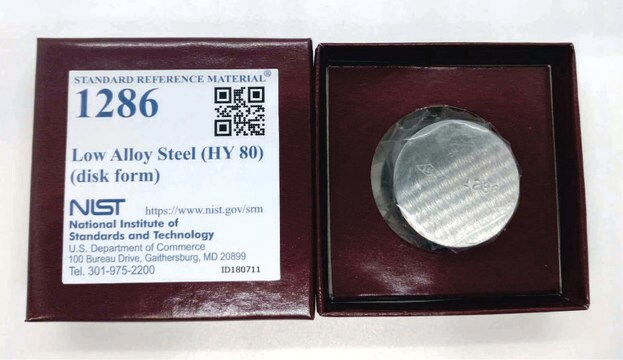Descripción general
We are committed to bringing you greener alternative products, which adhere to one or more of The 12 Principles of Green Chemistry. This antibody is Preservative-free, produced without the harm or sacrifice of animals and exceptionally stable to allow for ambient shipping and storage if needed and thus aligns with "Waste Prevention", "Designing Safer Chemicals" and "Design for Energy Efficiency".
Click here for more information.
ZooMAb® antibodies represent an entirely new generation of recombinant monoclonal antibodies. Each ZooMAb® antibody is manufactured using our proprietary recombinant expression system, purified to homogeneity, and precisely dispensed to produce robust and highly reproducible lot-to-lot consistency. Only top-performing clones are released for use by researchers. Each antibody is validated for high specificity and affinity across multiple applications, including its most commonly used application. ZooMAb® antibodies are reliably available and ready to ship when you need them.
Especificidad
Clone 1B15 is a ZooMAb® rabbit recombinant monoclonal antibody that specifically detects TRAF-interacting protein with FHA domain-containing protein B (TIFAB). It targets an epitope within 16 amino acids from the C-terminal region.
Inmunógeno
KLH-conjugated linear peptide corresponding to 16 amino acids from the C-terminal region of human TRAF-interacting protein with FHA domain-containing protein B (TIFAB).
Aplicación
Quality Control Testing
Evaluated by Western Blotting in THP-1 cell lysate.
Western Blotting Analysis: A 1:10,000 dilution of this antibody detected TIFAB in THP-1 cell lysate.
Tested Applications
Immunocytochemistry Analysis: A 1:100 dilution from a representative lot detected TIFAB in THP-1 cells.
Affinity Binding Assay: A representative lot of this antibody bound TIFAB peptide with a KD of 1.4 x 10-6 in an affinity binding assay.
Note: Actual optimal working dilutions must be determined by end user as specimens, and experimental conditions may vary with the end user.
Descripción de destino
TRAF-interacting protein with FHA domain-containing protein B (UniProt: Q6ZNK6; also known as TIFA-like protein) is encoded by the TIFAB gene (Gene ID: 497189) in human. TRAF-interacting protein with an forkhead-associated (FHA) (TIFA) and TRAF-interacting protein with FHA domain-containing protein B (TIFAB) are important modifiers of the innate immune signaling through their regulation of TRAF proteins. They contain highly conserved FHA domain that recognizes p-threonine residues on interacting proteins. The FHA domain of TIFAB is localized in amino acids 36-91, which is flanked by short N-and C-terminal sequences. TIFA serves as a positive regulator of innate immune and inflammatory pathways, whereas TIFAB is a negative regulator of innate immune and inflammatory pathways. TIFAB expression is observed in spleen, lung, thymus, and small intestine. It is also enriched in myeloid progenitors and monocytes. It is shown to be highly expressed in the more immature fraction of normal human bone marrow (BM) CD34+ stem/progenitor cells as compared with the mature cell fraction of CD34- BM cells. TIFAB is shown to associate with TIFA and block TIFA-mediated activation of NF-κB, without affecting TIFA levels. The human TIFAB protein displays about 80% homology to mouse TIFAB but contains 14 additional amino acids at its C-terminal end. Deletion of TIFAB in hematopoietic stem and progenitor cells has been linked to bone marrow failure in murine models. Its deletion is reported to increase p53 signaling and reduce leukemic cell function and leukemia development. Conversely, elevated levels of TIFAB represses p53 and increase leukemic progenitor function. This ZooMAb® recombinant monoclonal antibody, generated by our propriety technology, offers significantly enhanced specificity, affinity, reproducibility, and stability over conventional monoclonals. (Ref.: Niederkorn, M., et al. (2020). Exp. Hematol. 90; 18-29; Niederkorn, M., et al. (2020). Cell Rep. 30(8); 2776-2790; Matsumura, T., et al. (2004). Biochem. Biophys. Res. Commun. 317(1); 230-234).
Forma física
Purified recombinant rabbit monoclonal antibody IgG, lyophilized in PBS with 5% Trehalose, normal appearance a coarse or translucent resin. The PBS/trehalose components in the ZooMAb formulation can have the appearance of a semi-solid (bead like gel) after lyophilization. This is a normal phenomenon. Please follow the recommended reconstitution procedure in the data sheet to dissolve the semi-solid, bead-like, gel-appearing material. The resulting antibody solution is completely stable and functional as proven by full functional testing. Contains no biocide or preservatives, such as azide, or any animal by-products. Larger pack sizes provided as multiples of 25 µL.
Reconstitución
300 µg/mL after reconstitution at 25 µL per vial. Please refer to guidance on suggested starting dilutions and/or titers per application and sample type.
Almacenamiento y estabilidad
Recommend storage of lyophilized product at 2-8°C; Before reconstitution, micro-centrifuge vials briefly to spin down material to bottom of the vial; Reconstitute each vial by adding 25 µL of filtered lab grade water or PBS; Reconstituted antibodies can be stored at 2-8°C, or -20°C for long term storage. Avoid repeated freeze-thaws.
Otras notas
Concentration: Please refer to the Certificate of Analysis for the lot-specific concentration.
Información legal
ZooMAb is a registered trademark of Merck KGaA, Darmstadt, Germany
Cláusula de descargo de responsabilidad
Unless otherwise stated in our catalog or other company documentation accompanying the product(s), our products are intended for research use only and are not to be used for any other purpose, which includes but is not limited to, unauthorized commercial uses, in vitro diagnostic uses, ex vivo or in vivo therapeutic uses or any type of consumption or application to humans or animals.

